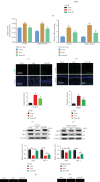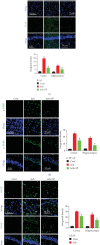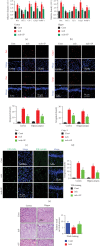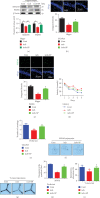Inhibition of JNK Alleviates Chronic Hypoperfusion-Related Ischemia Induces Oxidative Stress and Brain Degeneration via Nrf2/HO-1 and NF- κ B Signaling
- PMID: 32617137
- PMCID: PMC7315317
- DOI: 10.1155/2020/5291852
Inhibition of JNK Alleviates Chronic Hypoperfusion-Related Ischemia Induces Oxidative Stress and Brain Degeneration via Nrf2/HO-1 and NF- κ B Signaling
Abstract
Cerebral ischemia is one of the leading causes of neurological disorders. The exact molecular mechanism related to chronic unilateral cerebral ischemia-induced neurodegeneration and memory deficit has not been precisely elucidated. In this study, we examined the effect of chronic ischemia on the induction of oxidative stress and c-Jun N-terminal kinase-associated detrimental effects and unveiled the inhibitory effect of specific JNK inhibitor (SP600125) on JNK-mediated brain degeneration in adult mice. Our behavioral, biochemical, and immunofluorescence studies revealed that chronic ischemic injuries sustained increased levels of oxidative stress-induced active JNK for a long time, whereas SP600125 significantly reduced the elevated level of active JNK and further regulated Nrf2/HO-1 and NF-κB signaling, which have been confirmed in vivo. Neuroinflammatory mediators and loss of neuronal cells was significantly reduced with the administration of SP600125. Ischemic brain injury caused synaptic dysfunction and memory impairment in mice. However, these were significantly improved with SP600125. On the whole, these findings suggest that elevated ROS-mediated JNK is a key mediator in chronic ischemic conditions and has a crucial role in neuroinflammation, neurodegeneration, and memory dysfunction. Our findings suggest that chronic oxidative stress associated JNK would be a potential target in time-dependent studies of chronic ischemic conditions induced brain degeneration.
Copyright © 2020 Muhammad Sohail Khan et al.
Conflict of interest statement
The authors declared no competing financial interests.
Figures






References
MeSH terms
Substances
LinkOut - more resources
Full Text Sources
Medical
Research Materials
Miscellaneous

